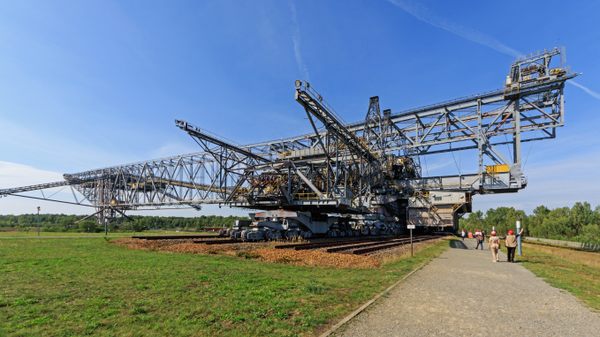At 260 feet tall and over 1600 feet long, the Abraumförderbrücke (overburden conveyer bridge) F60 is the largest vehicle ever constructed by size. Its length is over 1.5 times the height of the Eiffel Tower, and has been appropriately nicknamed the “lying Eiffel Tower.” Between 1969 and 1991, five such conveyer bridges were built by East German state-run combine TAKRAF for lignite mines in the Lusatia coalfields. A conveyer bridge serves to remove the upper levels of earth, known as overburden, to expose the ores underneath. They tend to be extremely large to maximize efficiency, and extremely long because they deposit the overburden on the opposite side of the mine.
In order to move around to different parts of the mine, conveyor bridges are situated on rails and are thus considered vehicles. For that purpose, the F60 has 760 wheels on two bogies, yet it can manage a top speed of less than half a mile per hour. As such, it only needs a few hundred feet of track at once on which to operate, with another vehicle dedicated to removing and laying it. The F60 still has an operating range of less than four miles because it relies on limited electric cables for power. The entire machine needed a crew of 14 to operate.
The F60 at the Klettwitz-Nord open-pit mine was the last of its model constructed, between 1988 and 1991. It was also the first to be decommissioned, after operating for just 15 months, because the power plants and briquette factories the mine was meant to service closed down after German reunification. In order to restore the local environment, the mine was flooded to form an artificial lake. To revitalize the area’s economy, the F60 was moved to adjacent higher ground, where it is now a “visitors’ mine” showcasing the area’s mining history.

